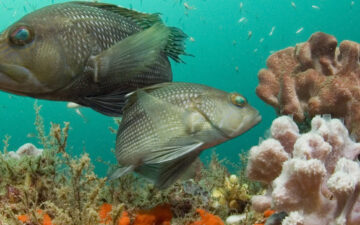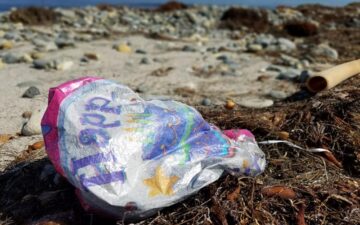Author: Mark J. Spalding, President of The Ocean Foundation

Recently one of my peers referred to doing more conservation as addressing the problem of how to take marine protection to scale. Covering nearly 70% of the planet and home to thousands of species of plants and animals, the ocean certainly represents a huge management problem.
For some marine conservation funders, global scaling of marine protection often implies centralized, standardized process and organization. An alternate option is replication of successful marine protection tailored to the scope and need of particular conservation goals. This is not a tension between scaling big and scaling well. After all, “scale is the enemy of sustainability.”
Replicating or propagating success is a more effective way to describe the change that is needed. But, we need to be much more careful about vocabulary when we talk about the application of protection measures themselves. “Going to scale,” as some VCs and entrepreneurs are wont to say, is appropriate for mass production that generates greater consumer access by making products less expensive. But even mass production to produce at scale often fails to take into consideration user differences and geographic differences – to produce a lowest common denominator “product” – one that doesn’t fit anyone well.
Less than two percent of the global ocean has some form of protection. Clearly, the “scale” of our protection of the ocean as a percentage needs to change. So too does our “scale” of philanthropic investment in marine conservation. Increasing scale in those contexts makes more sense. I realize this may seem like semantics, yet it is important to get our language right. And, if we don’t get the vocabulary right, we risk losing focus of what actually succeeded and why. The fundamental problem with the concept of going to scale, is that creating 100 marine protected areas seems better than establishing 10. It just feels better to say the bigger number, and is deceptively simple to not do any further analysis. But this number does not necessarily equate to quality of projects that are funded.
For another example, look what has happened to Territorial User Rights Fisheries in which community access “rights” (small r) allows for community self-governance. Community-based management of a local resource (fish, forest, coral reef, or otherwise) meets local needs and helps promote more sustainable use of the resource. There is a collective sensibility that helps support success over time. Such communal ownership and management too often is being mis-represented as a private property rights incentive success, when there is no private property involved. Replication of such successful programs can indeed increase the percentage of well-managed coastal resources over time. Replicating these localized structures of mutual need and respect means the right training and resources, and as important, the use of appropriate language—the collective, not the individual; public not private rights; and shared, mutual responsibility for stewardship. But in the end, it is the “well-managed” part that is as important as the “percentage” set aside for management.
I think in our new reality that “effectiveness” beats out “big scale.” We have already learned to our ocean’s cost that bringing commercial fishing to global scale resulted in overfishing, overconsumption, and depletion of the natural resource, as well as a clear disturbance of the ecological equilibrium. As we look ahead, we should remember to be very clear about what works and at what size or level—fixing problems is much more expensive and challenging than preventing them in the first place. I fear that the desire to empower so many fisherman in order to bring “solutions” to scale will undermine actions that are successful at small local scale. We can replicate those in great numbers without creating a lockstep, franchise-style system. We need to address each place, each community, each culture, and each marine conservation challenge as a unique opportunity, and tap the right team to address it. There is no silver bullet that works every time.
What were the essential elements of a successful marine conservation project, and can it be reconstructed and applied elsewhere with different personnel and under different circumstances? This can happen in two ways: ask the same grantee to succeed again in a new place; or through independent efforts by other actors to create similar programs. We know that not all success can be replicated. And, we know that just because we write a grant check we cannot dictate replication from the top down, or that it will be a success. This is even less true for “going to scale.” What we can do is support the sharing of lessons learned and hope for propagation of good ideas.
We need a nuanced and specific approach to local marine protection, fisheries management, food security and economic development. By combining this approach with replication of success, we can get at the particular goals in which a country will be more willing to invest public funds and business resources for such actions. And, when the scale of the place is large (e.g. the Arctic or the high seas), there is still the opportunity to be nuanced and problem-specific in our response.
Common themes supported by tailored implementation have proven themselves over and again. Focusing at this scale allows us to identify and support innovation, success, and education of others. If we carefully watch and understand what works, we are in a unique position as funders to help support the sharing of practices and actions that are successful. Perhaps we can even reduce the risk of failure as a result of using replication.
Photo by Andrew Seale/Marine Photobank







